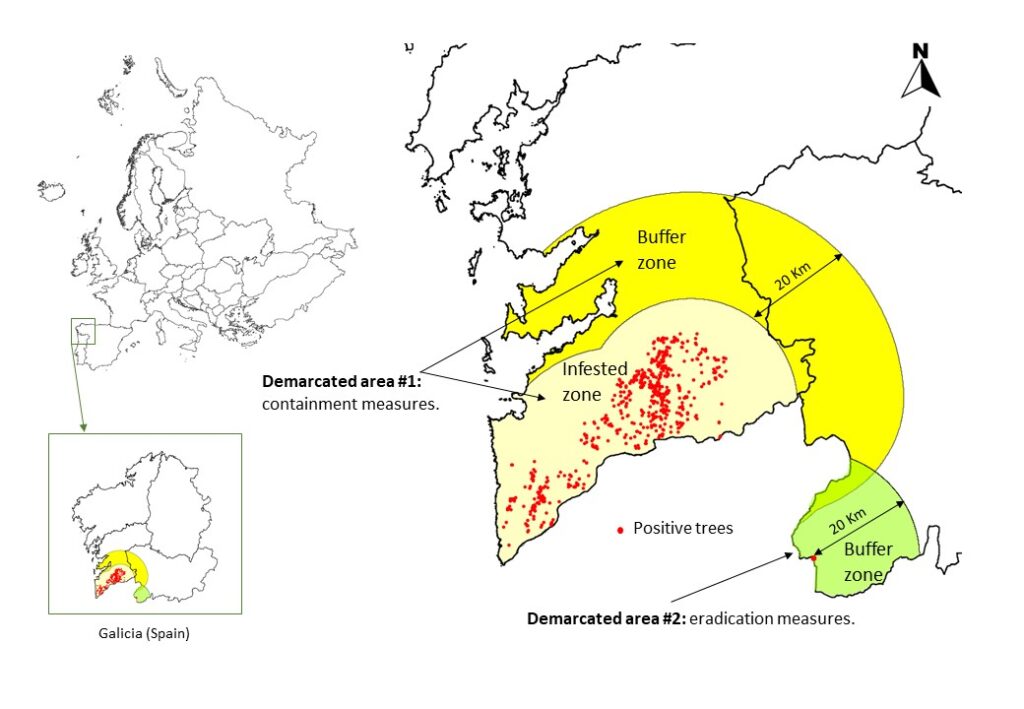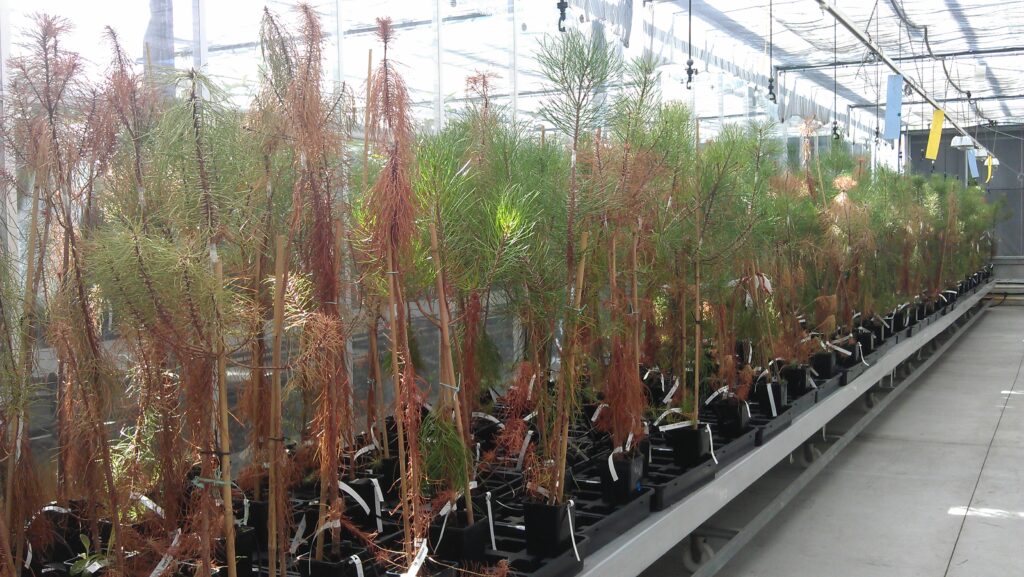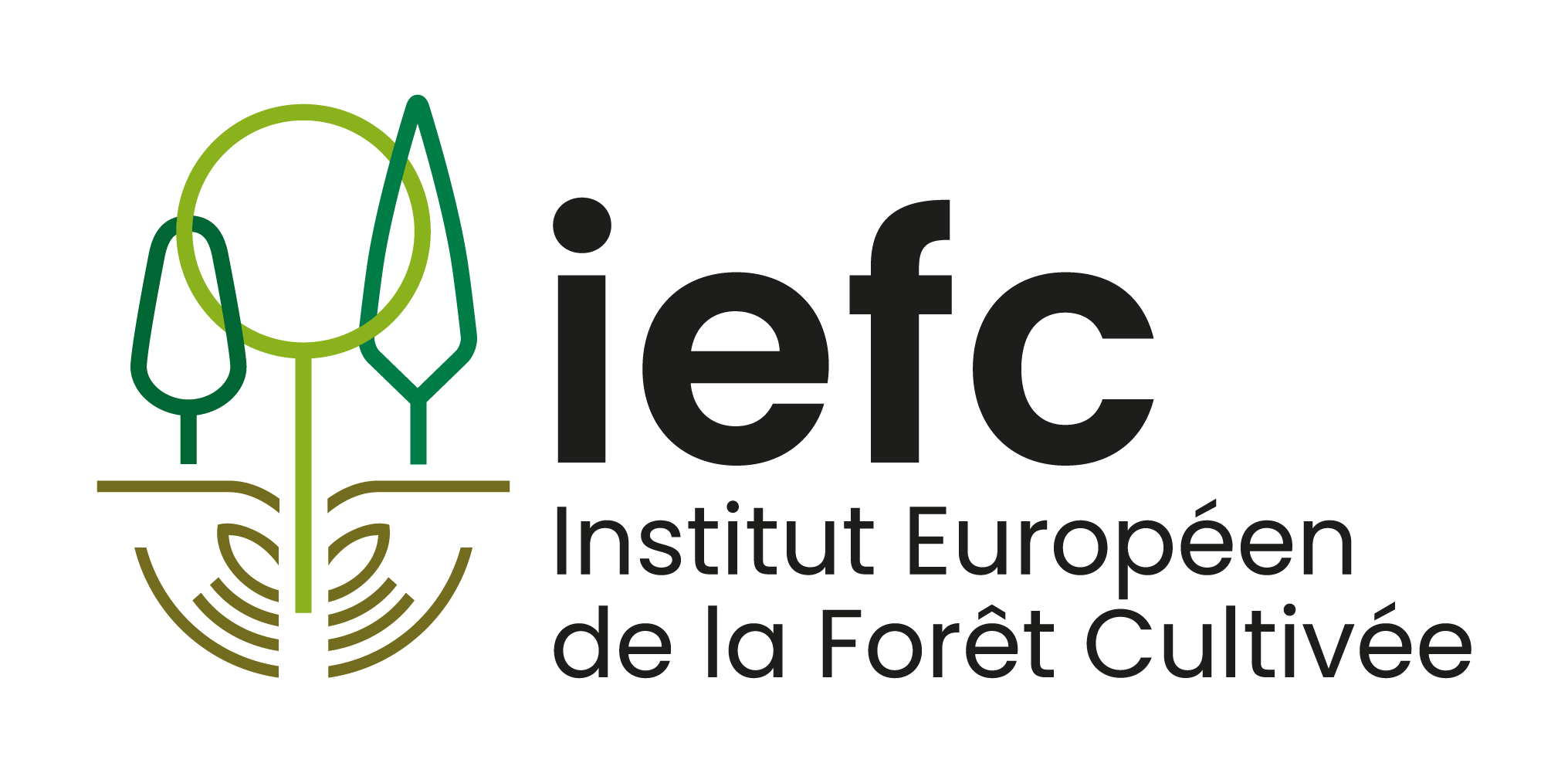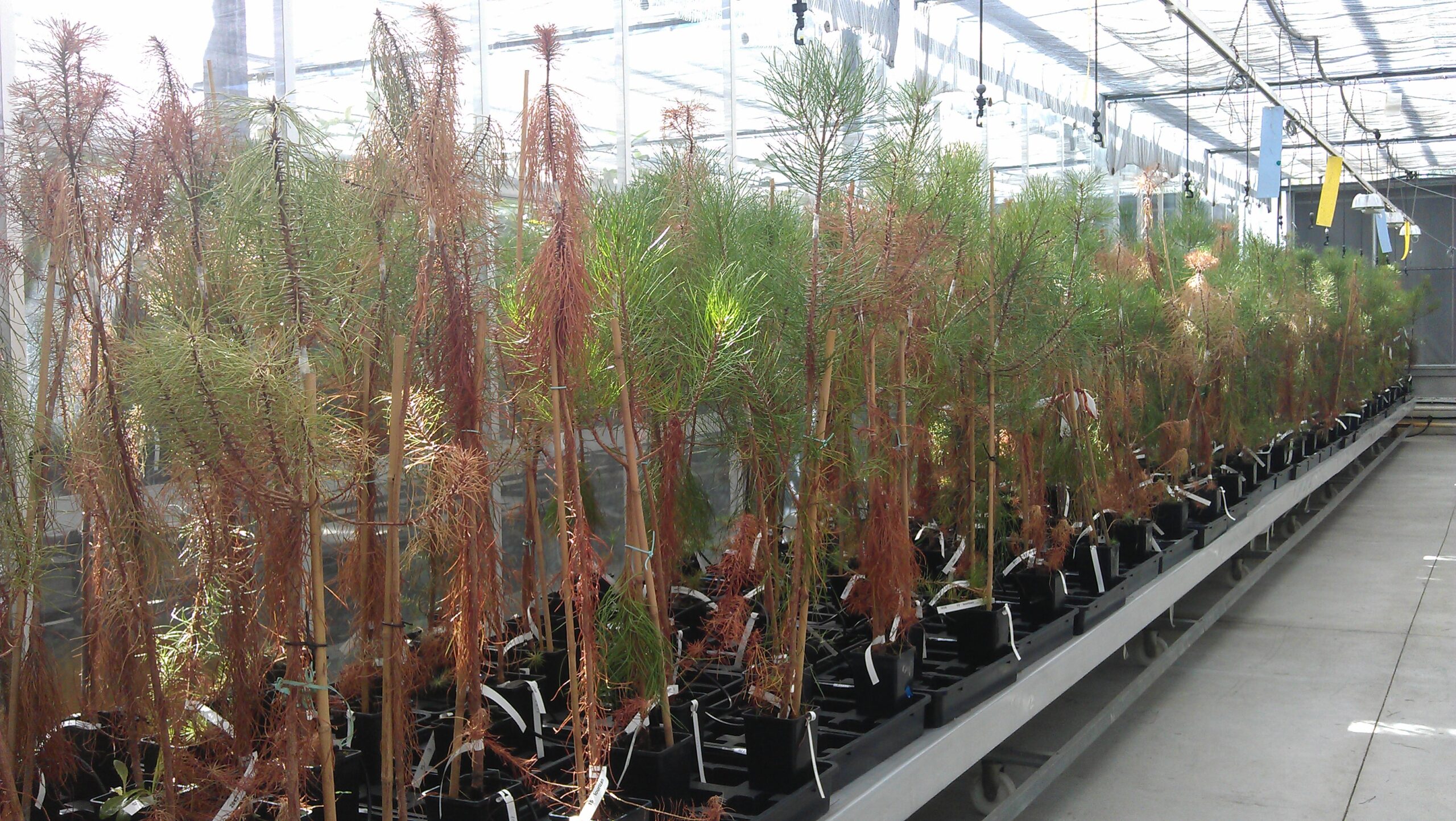Bursaphelenchus xylophilus (pinewood nematode, PWN), the nematode that causes the pine wilt disease (PWD), is considered a very important threat to the European pine forests. It is included in the A2 list of the European and Mediterranean Plant Protection Organisation (EPPO) and in Annex II of Implementing Regulation (EU) 2019/2072 as a Union quarantine pest.
This pathogen first appeared in Europe in 1999, specifically in Portugal, leading to the declaration of its entire continental territory as a demarcated area by 2008 (Mota et al., 2009). It was first detected in Spain in 2008 (Robertson et al., 2011), with its presence currently limited to regions bordering Portugal: Salamanca, Cáceres, and south of Galicia. European Union legislation, specifically Commission Implementing Decision 2012/535/EU (hereafter the Decision), established demarcated areas in these territories, comprising an infested zone and a 20 km radius buffer zone.
The presence of B. xylophilus was officially declared in Galicia (NW Spain) at the end of 2010 in As Neves, Pontevedra (DOG no. 228, November 26, 2010, p. 19.633; Abelleira et al., 2011). Subsequently, a new positive detection occurred in 2016 in Salvaterra do Miño, Pontevedra, near the 2010 positive, which did not alter the demarcated area (DOG no. 117, June 21, 2016, p. 25643). Two years later, in 2018, five new positive trees were detected, leading to an expansion of the demarcated area (DOG no. 8, January 11, 2019, p. 1559). Since its initial detection in 2010 until early 2025, the Xunta de Galicia has been undertaking various efforts to eradicate the PWN according to European guidelines (the Decision). However, the area has recently been declared a containment zone, establishing a 20 km buffer zone around the previously demarcated area (DOG no. 31, February 14, 2025, p. 12235; Figure 1, demarcated area #1). Moreover, surveys outside the existing demarcated area in 2024 revealed four PWN-positive samples from four pine trees in Lobios, Ourense (DOG no. 236, December 9, 2024, p. 64505), leading to the establishment of a new demarcated area in Galicia (Figure 1, demarcated area #2). This area includes an infested zone with a 100 m radius around the infected trees and a 20 km buffer zone, requiring the implementation of eradication measures according to Article 6 and Annex I of the Decision.
In this context, around the time of the first appearance of B. xylophilus in Galicia and to combat the potential damage of this pathogen to Galician pine forests, the Lourizán Forest Research Centre (Xunta de Galicia) began a genetic improvement line to confer resistance to this nematode within the Galician breeding programs for Pinus pinaster and Pinus radiata. Given that this pathogen is a quarantine organism, numerous inoculation assays were conducted under controlled greenhouse conditions (Figure 2), evaluating genotypes from the Galician breeding populations of both species. The results obtained demonstrated that resistance to B. xylophilus is heritable in both species, with a group of genotypes in each case standing out as the most resistant (Menéndez-Gutiérrez et al., 2018 and 2021). In this context, six P. pinaster parents of families were incorporated into the National Catalogue of Base Materials due to their resistance to B. xylophilus (BOE no. 165, June 12, 2020, p. 39838), and are now in production, but with a limited seed production capacity. Consequently, some Galician nurseries, in collaboration with the Xunta de Galicia and ARUME foundation, have started cloning this material through cuttings to increase the availability of resistant seedlings (“GOPIÑA project”, https://xn--gopia-rta.gal/es ). To date, the resistant plants produced have been planted by the Xunta de Galicia in demarcated area #1.
Authors: Díaz, R., Frade, S.
References:
Abelleira, A., Picoaga, A., Mansilla, J.P., Aguin, O. 2011 Detection of Bursaphelenchus xylophilus, causal agent of Pine Wilt Disease on Pinus pinaster in northwestern Spain. Plant Dis. 95, 776–776.
Menéndez-Gutiérrez, M., Alonso, M., Toval, G., Díaz, R. 2018. Testing of selected Pinus pinaster half-sib families for tolerance to pinewood nematode (Bursaphelenchus xylophilus). Forestry: an International Journal of Forest Research, 91, 38–48.
Menéndez-Gutiérrez, M., Alonso, M., Díaz, R. 2021. Assessing Genetic Variation in Resistance to Pinewood Nematode (Bursaphelenchus xylophilus) in Pinus radiata D. Don Half-Sib Families. Forests 2021, 12, 1474.
Mota, M., Braasch, H., Bravo, M. 1999. First Report of Bursaphelenchus xylophilus in Portugal and in Europe. Nematology, 1, 727–734.
Robertson, L., Cobacho Arcos, S., Escuer, M., Santiago Merino, R., Esparrago, G., Abelleira, A., Navas, A. 2011. Incidence of the pinewood nematode Bursaphelenchus xylophilus Steiner & Buhrer, 1934 (Nickle, 1970) in Spain. Nematology, 13, 755–757.
Figure 1. Map of the currently demarcated areas in Galicia.

Figure 2. Controlled inoculation assay on Pinus pinaster seedlings.


